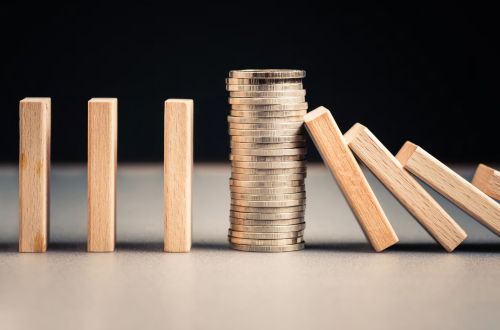In search of resilient returns

Monthly House View - May 2022 - Download here [EN]
Monthly House View - May 2022 - Download here [CN]
In recent weeks, the markets quickly shifted from worrying about a slowdown caused by the outbreak of the conflict in Ukraine to fearing persistently high inflation, prompting central banks to accelerate their rate hike timetables. Yield curves accurately reflect the risk that an inflationary surge will lead to a slowdown, resulting in a fast, but short-lived rate hike cycle followed by rate cuts from 2024… if not before.
Investors can lose their bearings in this type of environment. First, because they need to learn to move away from thinking about nominal performances and instead focus on the search for positive real returns, net of the inflation expected in the coming years. Second, because these future returns rely on growth and margin assumptions that have been shattered by this new environment. And, lastly, because there is limited value in using benchmarks and passive index management in this context, particularly when the equity and bond markets are sending rather different signals, between growth and margin resilience on the one hand, and recession risk on the other.
Nevertheless, it can be difficult for investors to change their mindset. They may have to walk away from the investment style that has worked the best for the past 10 years (Growth stocks) and bear all the consequences of shifting gears, while stepping back from the framework used in recent years, symbolised by the exit from negative interest rates.
Central banks have changed their models in just a few weeks and made fighting inflation their top priority. The “Greenspan put” is long gone, and central banks will now provide markets with less support. The reduction in the Fed’s balance sheet is terra incognita, for which we can find few precedents in monetary history. This makes it difficult to envision long-term rates at very different levels from those of the period that began with the pandemic.
Changing mindsets can also be expensive in the short term, both psychologically (calling into question convictions and habits backed by 10 years of performance) and financially (knowing that it is time to sell losing positions ahead of a repositioning), but profitable in the long term. While this environment differs from that of the 1970s on a number of parameters, the question that remains is how to identify the asset classes that will be bet- ter able to withstand a higher inflation cycle than that currently projected by the consensus.
High-dividend equities and high-yield debt appear to be the asset classes whose returns should exceed average inflation over the next five years. However, the companies that are able to ensure the durability, sustainability and growth of these returns, and that are not penalised by weakened margins, excessive debt, or investment needs that are not self-funded, still have to be identified. This screening by resilience and quality should allow portfolios to perform well in all environments, like a ship designed to sail in calm weather as well as choppy seas. In the corporate bond world, selectivity is still necessary in the face of an asymmetrical energy shock that has exposed some countries’ and sectors’ heavy reliance on Russian gas.
The search for resilient intrinsic returns in the medium term, which can be sustained regardless of the monetary or economic environment, should therefore take precedence over the search for index performance in the short term. The latter is more heavily influenced by the short-term direction of confidence indicators, geopolitical risks and central bank communication. That will be the challenge for the earnings season set to start this month on the heels of a surprisingly positive trend in earnings expectation revisions despite the difficult environment for companies.
Monthly House View, 22/04/2022 release - Excerpt of the Editorial
April 28, 2022




